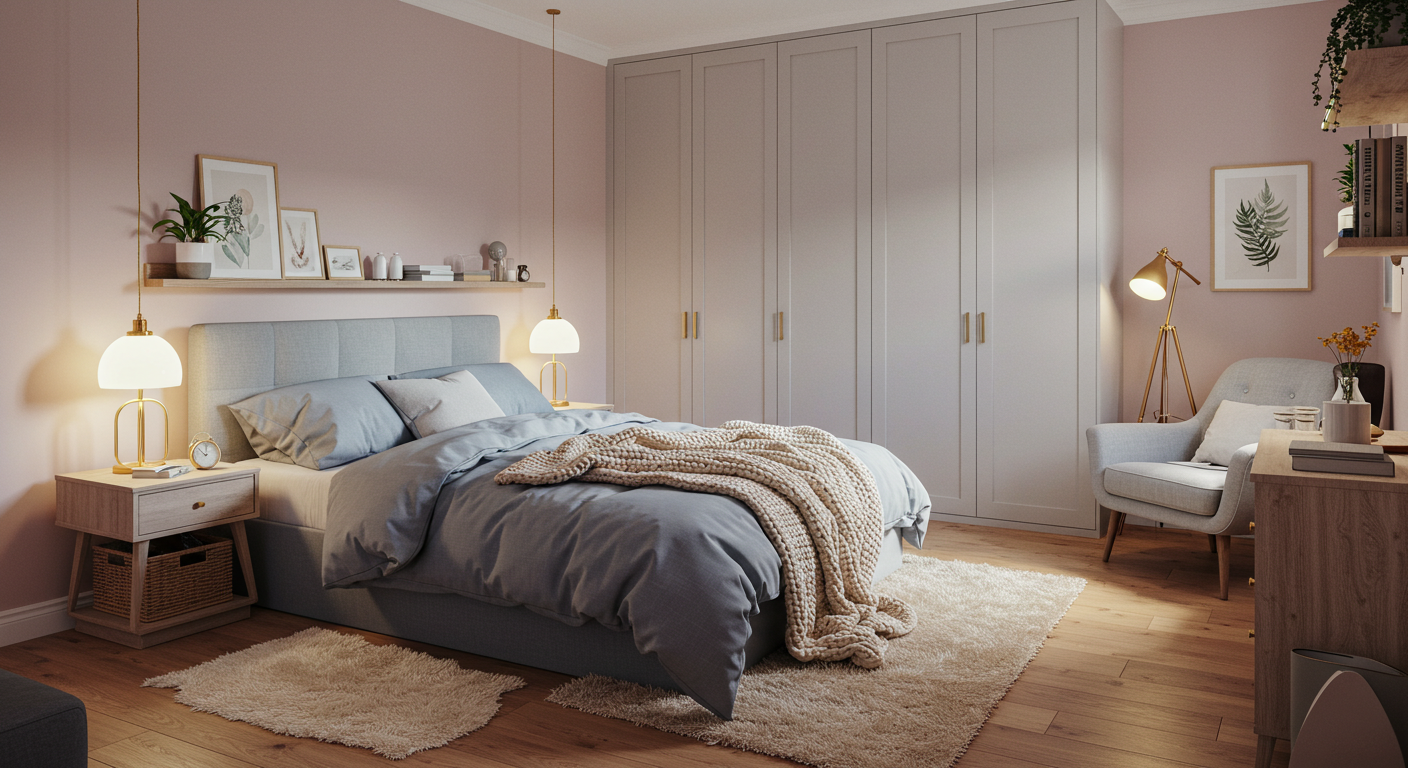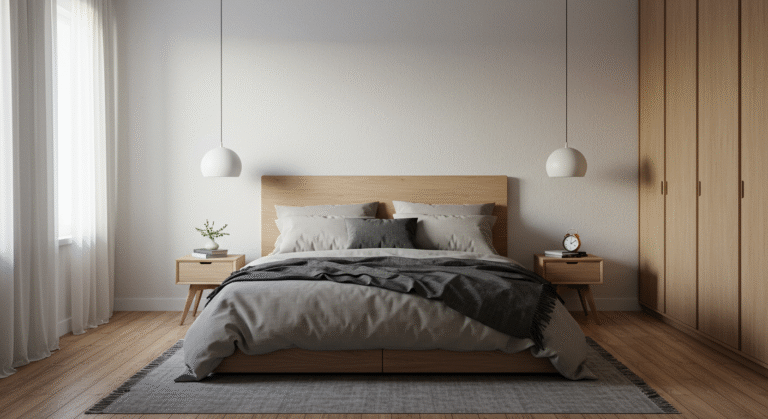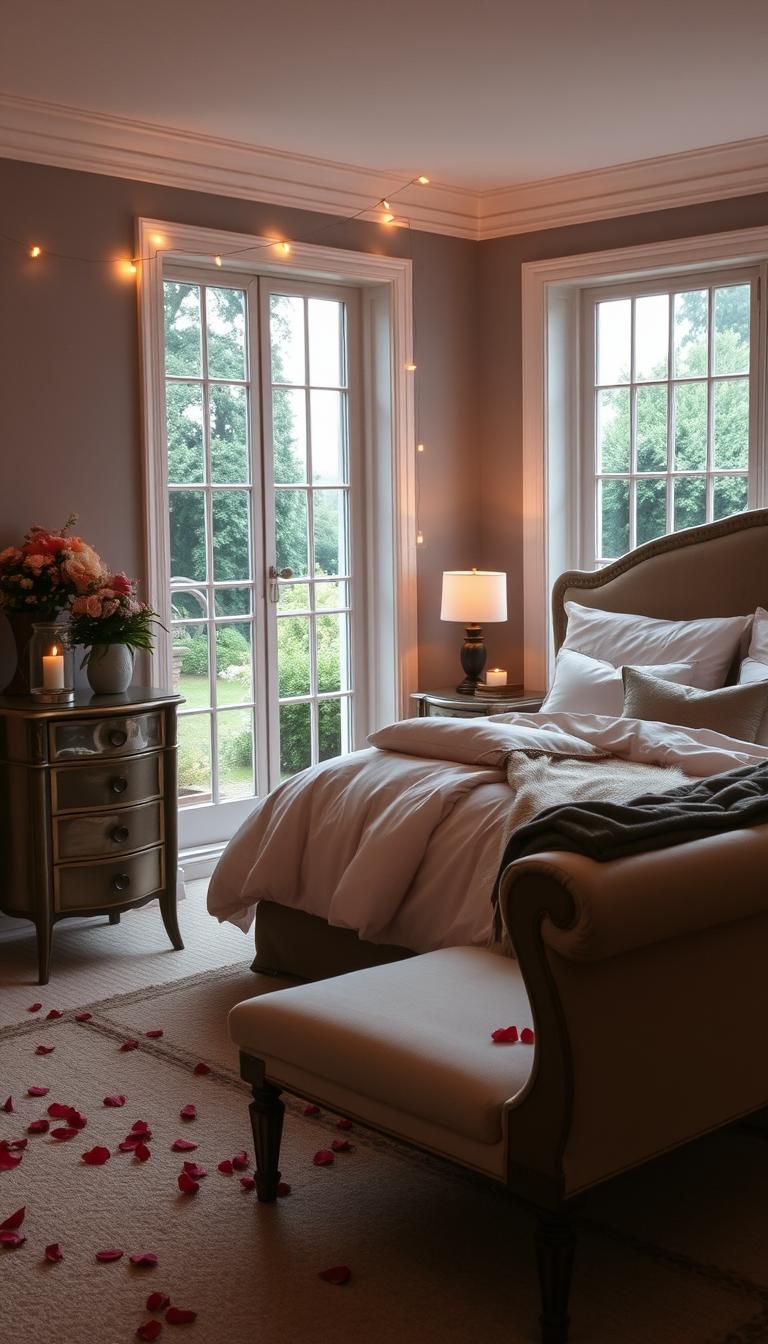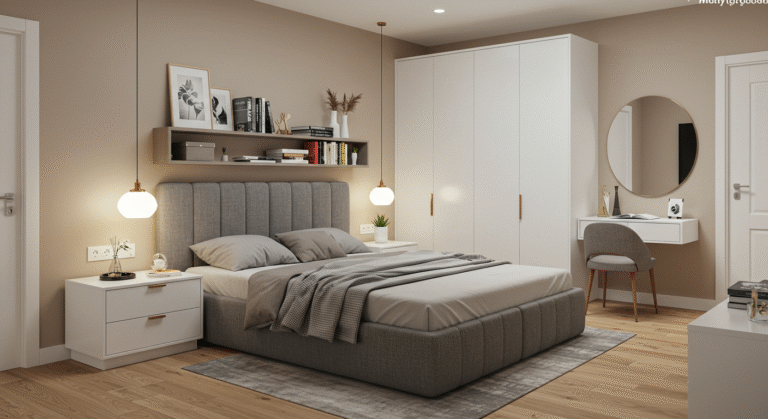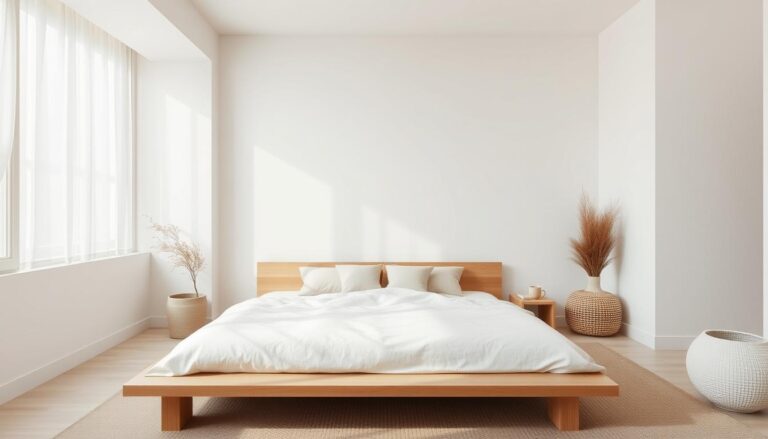10 Cozy Bedroom Ideas to Create the Perfect Retreat
My bedroom is my sanctuary, a place where I can unwind and recharge. It’s a space that deserves special attention when it comes to home design. The right bedroom ideas can transform an ordinary room into a restful retreat that reflects my personal style.
A well-designed bedroom serves multiple functions beyond just sleep. It’s a space for relaxation, reading, and even working. By incorporating the right design elements, I can dramatically change the feel of my home. In this article, I’ll explore various ideas to enhance my bedroom, from color psychology to lighting strategies, without requiring a complete renovation or a large budget.
Key Takeaways
- Transform your bedroom into a restful retreat with the right design elements.
- Bedroom design serves multiple functions beyond sleep.
- Incorporate color psychology and lighting strategies to enhance your space.
- You don’t need a complete renovation or a large budget to revamp your bedroom.
- A well-designed bedroom reflects your personal style.
Read Also: 21+ Trendy Vanity Design Ideas for a Modern Look
Creating Your Personal Sanctuary
Creating a bedroom that serves as a true sanctuary requires understanding your space and preferences. The dreamiest space in the home is the one we all retreat to for rest and relaxation.
Understanding Your Bedroom’s Potential
To start, it’s essential to evaluate your bedroom’s current layout and identify its untapped potential for improvement. This involves assessing your bedroom’s dimensions and architectural features to make informed design decisions.
Assessing Your Space and Needs
Consider both function and aesthetics when creating your personal sanctuary at home. Determine your specific needs from a bedroom, whether it’s better storage, improved relaxation, or multifunctional use.
| Aspect | Considerations |
| Functionality | Storage, relaxation, multifunctionality |
| Aesthetics | Personal style, color schemes, furniture |
| Walls Treatment | Paint, wallpaper, paneling |
Different bedroom walls treatments can dramatically alter the feel of your space. By understanding your needs and assessing your bedroom, you can create a sanctuary that reflects your personal style while promoting restful sleep.
Transformative Bedroom Ideas for Any Space
Your bedroom should be your haven, and with the right ideas, it can be, no matter the dimensions. Whether you’re working with a small space or a larger bedroom, the key is to create a space that feels both relaxing and inviting.
Light & Airy Designs
Soft neutrals and aquatic shades can create a soothing environment for sleep. Consider incorporating botanical greens to make your bedroom feel restful and nurturing. These colors can help in creating an open, expansive feel, perfect for smaller spaces.
Cozy & Cocooning Concepts
For a luxurious feel, look to rich colors. A painted headboard in a deep shade can create intrigue and intimacy, making your bedroom perfect for relaxation. This cozy, enveloping space is ideal for reading or unwinding.
Dark & Dreamy Atmospheres
Embracing darker shades can transform your bedroom into a sophisticated, grounded space. Consider using deeper colors on the walls and woodwork to create a serene atmosphere. This approach can be particularly effective in creating a dramatic impact in larger bedrooms.
By exploring these distinct design approaches, you can find the perfect ideas to transform your bedroom into a haven that suits your style and needs.
Read Also: 10 Modern Dining Room: Transform Your Space in Style
Color Psychology in Bedroom Design
The strategic use of color can transform the bedroom into a serene sanctuary. As we spend a significant amount of time in our bedrooms, the colors we choose can significantly impact our mood and sleep quality.
Calming Neutrals and Pastels
Calming neutrals and soft pastels can create a serene atmosphere, promoting relaxation and rest. For instance, using Elephant’s Breath by Farrow & Ball on the walls can add warmth to the room. “The right color can make a room feel cozy and inviting,” says a design expert.
Bold and Dramatic Color Choices
On the other hand, bold and dramatic color choices can energize the space or create a luxurious ambiance. A bold wall color like Oakmoss by Sherwin-Williams can be a striking focal point in the bedroom.
Nature-Inspired Color Palettes
Nature-inspired color palettes can bring the outdoors in, creating a harmonious bedroom environment. By choosing the right paint colors for the walls, you can enhance the overall look of the room and create a restful space.
Furniture Selection and Arrangement
When it comes to bedroom furniture, the right selection and arrangement can make all the difference in achieving a serene retreat. The bedroom is a personal sanctuary, and its design should reflect a balance between functionality and aesthetics.
Choosing Proportionate Pieces
Selecting furniture that’s proportionate to the bedroom space is essential. Oversized pieces can make a room feel cramped, while too-small furniture can leave it feeling empty. For instance, a massive dresser or an oversized accent chair might overwhelm a small bedroom. Instead, opt for streamlined, minimalist designs that create a sense of calm.
Multi-Functional Furniture Solutions
Incorporating multi-functional furniture can maximize space efficiency. For example, using a stool as a side table, plant stand, or extra seating can simplify the room’s layout. This approach is particularly beneficial in smaller bedrooms where every piece counts.
Creating Focal Points with Statement Pieces
A statement piece, such as a distinctive bed or an eye-catching headboard, can create a focal point in the room. This not only adds visual interest but also helps to anchor the space, making it feel more cohesive and inviting.
By thoughtfully selecting and arranging furniture, you can create a bedroom that is both beautiful and functional, making the most of the available floor space.
Read Also: 15+ Top Dorm Room Ideas to Transform Your Space
Texture and Layering Techniques
Texture is a powerful tool in bedroom design, capable of transforming a cold, sterile space into a warm and welcoming sanctuary. By incorporating various textures and layering techniques, you can add depth, warmth, and visual interest to your bedroom.
Mixing Textiles for Visual Interest
One of the most effective ways to add texture to your bedroom is by mixing different textiles. Linens, velvets, and knits can be combined to create a rich sensory experience. For instance, pairing smooth linens with chunky knits or soft velvets can add a fascinating contrast to your bed and seating areas.
Throw pillows and blankets are simple yet impactful ways to introduce new textures. You can also consider layering different materials for your bedding, such as a velvet headboard, cotton sheets, and a woolen blanket, to create a visually appealing and tactile experience.
Incorporating Natural Materials
Wood is a versatile natural material that can be incorporated into your bedroom design in various ways, from furniture to accent pieces. A wooden headboard or nightstand can add warmth and character to the room. Additionally, wooden flooring, such as honey-colored wood floors, can provide a natural and cozy base for your bedroom.
Other natural materials like stone and plant fibers can also be used to ground your bedroom design and connect it to nature. For example, a stone vase or a woven basket can introduce an organic feel to your space.
Read Also: 10+ Elevate Your College Dorm Aesthetic: Tips & Inspiration
Balancing Hard and Soft Elements
Achieving a balance between hard and soft elements is crucial for creating a bedroom that feels both structured and comfortable. Hard elements, such as a wooden bed frame or a stone wall, can be balanced with soft textiles like plush rugs, comfortable bedding, and cozy throw blankets.
Layering a rug over your floor can not only add warmth and texture but also help define different areas within your bedroom. For a cohesive look, choose a rug that complements your bedroom’s color palette and style.
By thoughtfully combining different textures and layering techniques, you can create a bedroom that is not only visually appealing but also inviting and comfortable. Whether you’re working with a small space or a large one, these strategies can help you achieve a cozy and relaxing atmosphere that reflects your personal style.
Lighting Strategies for Bedroom Ambiance
Bedroom lighting is more than just illumination; it’s about creating a mood. The right lighting strategy can transform your bedroom into a cozy retreat, perfect for relaxation and sleep.
Layering Different Light Sources
Layering light involves using a variety of sources and types to create a dynamic and inviting atmosphere. This includes overhead lighting for overall illumination, ambient lighting such as lamps or sconces to create a warm glow, and task lighting like bedside lamps for reading.
Statement Lighting Fixtures
A statement lighting fixture can serve as a focal point in the bedroom, adding style and personality to the space. Consider unique fixtures like an antique engineer’s light or a Serge Mouille chandelier.
Natural Light Optimization
Optimizing natural light is also crucial. Use window treatments that allow for flexibility in controlling the amount of natural light entering the room, and consider placing mirrors strategically to reflect natural light and make the space feel larger.
By implementing these lighting strategies, you can create a bedroom that is not only functional but also a serene and inviting sanctuary.
Conclusion:
Bringing your bedroom vision to life requires a thoughtful blend of style, comfort, and functionality. Throughout this article, we’ve explored various bedroom ideas that cater to different tastes and needs. Your bedroom should reflect your personal style while maintaining a serene atmosphere. Experiment with different combinations of color, texture, and lighting to find what works best for you. Consider the potential of your bedroom walls for creative expression through paint or wallpaper. Thoughtful furniture selection and arrangement can also transform the look and feel of your bedroom.
FAQ
How can I make my small bedroom look more spacious?
To make your small bedroom appear larger, consider using light colors on your walls and sheer curtains to allow natural light to filter in. I recommend selecting multi-functional furniture pieces, like a storage bed or a dresser with a mirror, to optimize your space.
What are some ways to add texture to my bedroom?
Adding texture to your bedroom can be achieved by mixing different textiles, such as velvet, linen, and cotton. You can also incorporate natural materials like wood, woven baskets, or a jute rug to add depth and visual interest to your space.
How do I choose the right rug for my bedroom?
When selecting a rug for your bedroom, consider the color palette and texture of your space. I suggest choosing a rug that complements your bed and furniture, and is large enough to fit under your bed and nightstands.
What are some lighting strategies for creating a relaxing bedroom ambiance?
To create a relaxing bedroom ambiance, I recommend layering different light sources, such as table lamps, floor lamps, and string lights. You can also use dimmer switches to adjust the lighting level to your liking.
How can I create a focal point in my bedroom?
Creating a focal point in your bedroom can be achieved by using a statement piece of furniture, like a bold headboard or a colorful piece of art. You can also create a focal point by accenting a wall with a unique wallpaper or paint color.
What are some ways to incorporate natural light into my bedroom design?
To incorporate natural light into your bedroom design, consider using sheer curtains or blinds that allow sunlight to filter in. You can also place your bed near a window to take advantage of natural light.

